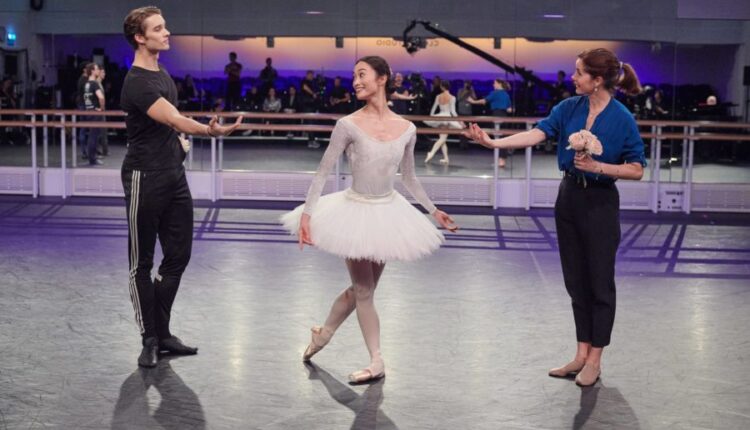Introduction: More Than Just Movement
Dance is one of the most captivating forms of human expression. It transcends language, culture, and time. A delicate blend of physical motion and emotional articulation, dance tells stories, preserves traditions, and evokes feelings that words sometimes fail to capture. From the elegant glide of ballet to the spirited rhythm of folk dance, each movement is a celebration of the body, spirit, and the moment itself. It is, in essence, the poetry of motion—a language without words that speaks directly to the soul.
A Universal Language
Across continents and civilizations, dance has been an integral part of human life. From sacred rituals to social celebrations, from royal courts to village squares, people have turned to dance to mark moments of joy, grief, reverence, and unity. It is no surprise that every culture, no matter how remote or ancient, has its own distinctive style of dance.
The Role of Dance Across Cultures
-
India: Classical forms like Bharatanatyam and Kathak narrate mythological tales with intricate footwork and hand gestures
-
Spain: Flamenco ignites passion through its fiery rhythms and dramatic flair
-
West Africa: Dance is intertwined with drumming and community, reflecting daily life and ancestral honor
-
Brazil: Samba brings the streets to life during Carnival, blending music, dance, and spectacle
-
Russia: Ballet thrives in elegance and technical precision, telling stories through finely tuned choreography
Dance serves not only as entertainment but as a powerful medium of identity, resistance, and cultural continuity.
The Healing Power of Dance
Beyond its aesthetic appeal, dance holds profound therapeutic potential. Movement, when coupled with rhythm and emotion, becomes a pathway to healing. Dance therapy is now recognized as a legitimate practice for addressing physical, emotional, and psychological challenges. It allows individuals to reconnect with their bodies, release stored trauma, and express themselves in safe, creative ways.
Benefits of dance for mind and body:
-
Enhances flexibility, balance, and cardiovascular health
-
Boosts mood and alleviates symptoms of anxiety or depression
-
Encourages mindfulness through presence in movement
-
Fosters self-esteem and confidence, particularly in group settings
-
Strengthens memory and cognitive function through choreography
Whether it’s a structured session or a spontaneous moment alone in your living room, dance invites presence, joy, and emotional release.
Dance as an Art Form
At its highest level, dance becomes a performance art—intensely disciplined, emotionally powerful, and intellectually enriching. Choreography is akin to composition, where each step, gesture, and transition serves a greater narrative. Dancers, like musicians or actors, must train for years to master technique, timing, and the emotive subtleties required to truly move an audience.
Famous forms of professional dance include:
-
Ballet: Known for grace and technique, it demands exceptional strength and poise
-
Contemporary: A fusion of classical, modern, and expressive forms, emphasizing personal storytelling
-
Hip-hop: Born from street culture, it is dynamic, bold, and rhythmically complex
-
Tap dance: A percussive style where the dancer becomes the instrument
-
Jazz dance: Energetic, stylish, and closely tied to music and theater
These genres continue to evolve, shaped by innovation and cultural exchange.
Dance in the Digital Age
In recent years, dance has found a powerful new stage—the digital world. Platforms like TikTok, YouTube, and Instagram have democratized dance, making it accessible to a global audience. What was once confined to studios or theaters is now filmed in bedrooms, city streets, and open fields.
Effects of digital media on dance culture:
-
Encourages global collaboration and cultural fusion
-
Provides exposure and opportunities for independent artists
-
Sparks dance challenges that go viral, bringing joy to millions
-
Risks oversimplifying complex traditions into trends
Despite challenges, the digital dance revolution has revitalized public interest and bridged cultural divides in unexpected ways.
The Social Dimension of Dance
Dance is inherently social. From weddings to festivals, clubs to classrooms, it invites people to connect, synchronize, and celebrate together. Partner dances like the waltz, salsa, or tango embody intimacy and trust. Group dances, such as line or circle dances, emphasize unity and shared rhythm. In all its forms, dance builds community.
Reasons why dance brings people together:
-
Fosters non-verbal communication and empathy
-
Breaks social barriers through shared movement
-
Offers a joyful space for intergenerational exchange
-
Creates collective memories through participation
In a world increasingly fragmented by screens and schedules, dance offers a rare and precious form of genuine human interaction.
Children and Dance: A Foundation of Growth
Introducing children to dance at an early age offers lifelong benefits. Beyond physical fitness, dance helps develop coordination, focus, discipline, and creativity. It can also be a critical outlet for emotional expression, especially for children who struggle with verbal communication.
Dance education in childhood encourages:
-
Teamwork and cooperation
-
Resilience through practice and performance
-
Body positivity and awareness
-
Artistic appreciation and cultural curiosity
Dance can shape young minds in beautiful ways, nurturing not just future artists but well-rounded individuals.
Conclusion: Dance as Celebration, Expression, and Art
Dance is more than an activity; it is a reflection of who we are, how we feel, and how we connect with others. It captures the essence of life in motion—fluid, rhythmic, expressive, and always evolving. Whether you are a trained performer or someone who sways to music in your kitchen, dance offers something profound. It invites you to celebrate the moment, embrace your body, and share joy with the world around you.
In every graceful pirouette or spontaneous shuffle, in every traditional folk step or experimental routine, dance reminds us that we are alive. And that, in itself, is always worth celebrating


Comments are closed.